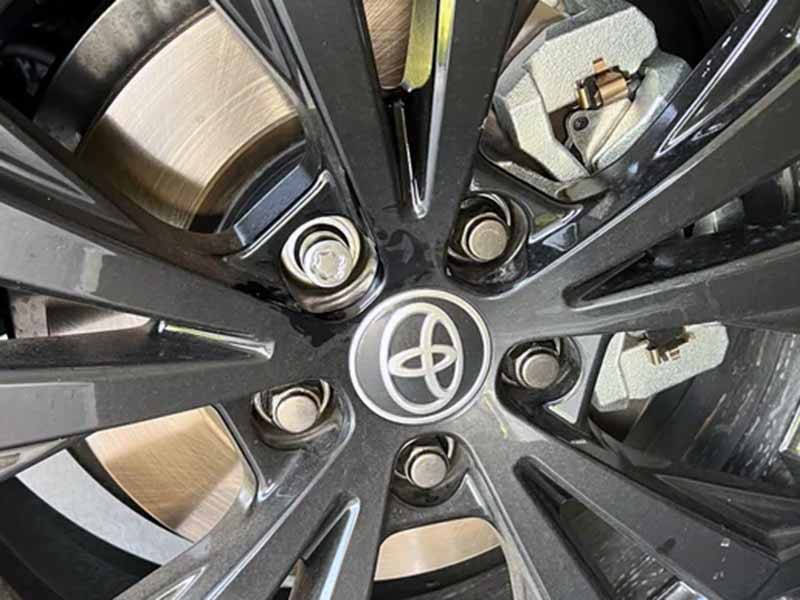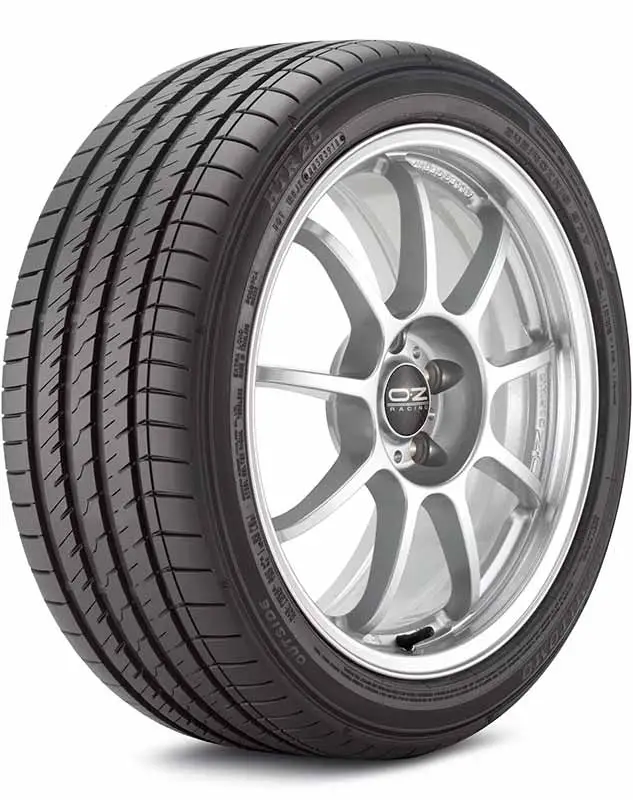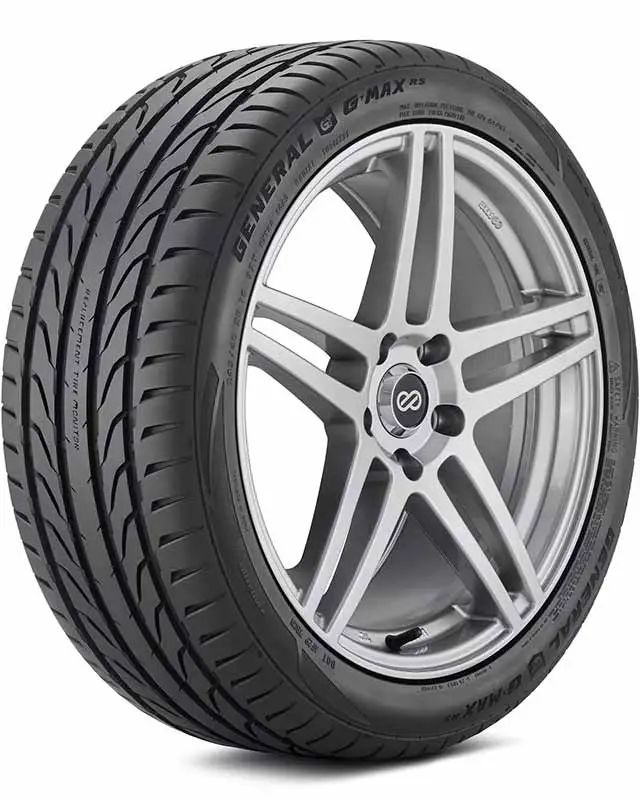Picture this: you’ve invested in a shiny new set of wheels for your car or truck, only to wake up one day and find them gone. It’s a scenario no one wants to face, but it’s a reality in today’s world.
What Are Wheel Locks?
Wheel locks are specialized lug nuts designed to protect your vehicle’s wheels from theft, requiring a unique key for installation and removal.
In this article, we delve into the various aspects of wheel locks, including their types, importance, key location and maintenance, and tips on choosing the right set for your vehicle.

McGard Wheel Locks
Understanding Wheel Locks
Have you ever parked your car, only to come back and find your tires missing? It’s a rare but real concern for many vehicle owners. Enter wheel locks: your first line of defense against tire theft. Let’s dive into what wheel locks are and why they’re more than just fancy lug nuts.
What Exactly Are Wheel Locks?
- Simple Definition: Wheel locks are specialized lug nuts designed to prevent tire theft.
- Unique Key: Each set of wheel locks comes with a unique key or a patterned socket that fits only those specific locks.
- Appearance: They look similar to regular lug nuts but have a distinct pattern that makes them stand out.
It’s important to understand that if someone wants to steal your wheels bad enough, they can find a way to remove the wheel locks.
TireGrades Expert Tip
How Do Wheel Locks Work?
- Installation: Like standard lug nuts, wheel locks are screwed onto the wheel studs, but with a twist – literally. They require a special key to tighten or loosen, making it difficult for would-be thieves to remove your wheels without the key.
- Key Mechanics: The key or patterned socket aligns with the unique pattern on the wheel lock, allowing you to apply or remove the lock.
- Security Feature: This design means that a standard wrench or socket can’t remove the wheel lock, adding a layer of security to your vehicle’s wheels.
Why Wheel Locks Matter
You might wonder if wheel locks are genuinely necessary. Here’s the thing: wheels, especially those on passenger cars and trucks, can be quite valuable. Here’s why wheel locks are crucial:
- Theft Deterrent: They act as a deterrent. The mere presence of wheel locks can discourage thieves.
- Protection for Your Investment: Wheels, particularly custom or alloy ones, can be expensive. Wheel locks protect your investment.
- Peace of Mind: Knowing your wheels have an added layer of security can give you peace of mind, especially in areas prone to theft.
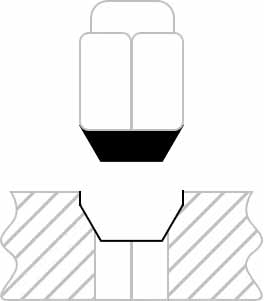
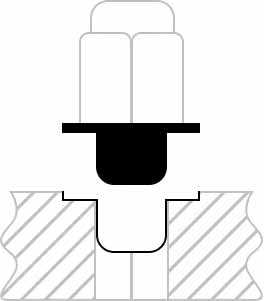
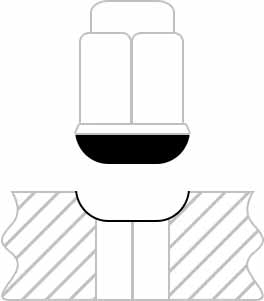
Types of Wheel Locks
When it comes to wheel locks, not all are created equal. Different vehicles and preferences call for different types of wheel locks. Let’s explore the various kinds available and what makes each unique.
Diverse Styles for Different Needs
- Spline Drive Locks: These have a conical seat and a thin, splined design. Great for tight spaces where traditional locks won’t fit.
- Conical Seat Locks: The most common type, they have a cone-shaped seat that matches the wheel’s lug seat.
- Ball Seat Locks: Designed for wheels with ball-shaped lug seats, often found in some specific brands like Volkswagen.
- Mag Seat Locks: These have a flat seat and a washer, suitable for wheels with a flat lug seat.
Pros and Cons
Each type of wheel lock has its advantages and drawbacks. Here’s a quick rundown:
- Spline Drive Locks:
- Pros: Compact design, good for tight spaces.
- Cons: Can be more challenging to align the key.
- Conical Seat Locks:
- Pros: Widely available, fits most vehicles.
- Cons: More common, so thieves might be more familiar with them.
- Ball Seat Locks:
- Pros: Specific fit for certain brands, offering tailored security.
- Cons: Less variety in the market.
- Mag Seat Locks:
- Pros: Strong fit for appropriate wheel types.
- Cons: Not as widely applicable.
Passenger Cars vs. Trucks
- Passenger Cars: Often use conical or spline drive locks due to more common wheel types.
- Trucks: Might require stronger or larger locks, like mag seat locks, depending on the wheel design.
Key Takeaway
Choosing the right wheel lock depends on your vehicle type and the design of your wheels. It’s not a one-size-fits-all solution, so it’s important to know your wheel’s specifications before purchasing wheel locks.
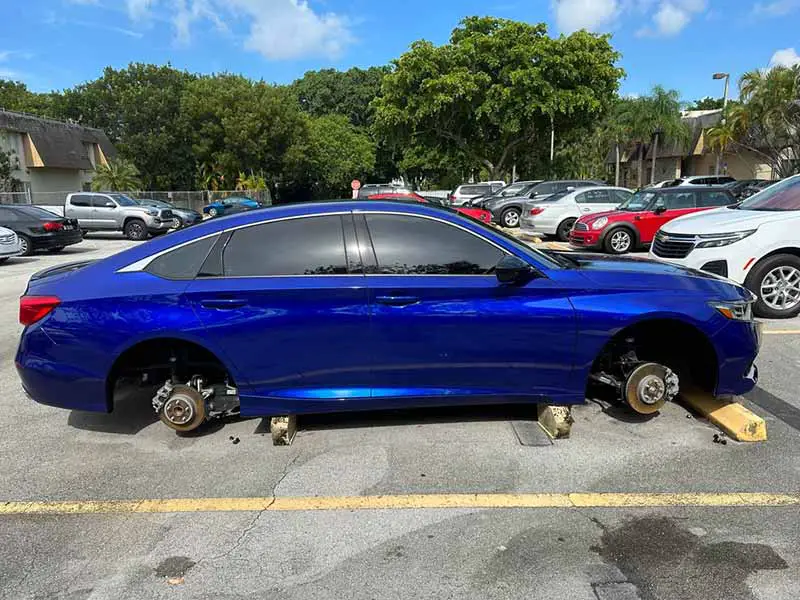
Importance of Wheel Locks
You’ve got a handle on the different types of wheel locks, but let’s delve into why these small devices pack a big punch in terms of vehicle security.
More Than Just a Theft Deterrent
- High-Value Targets: Wheels, especially those on luxury cars or custom models, can be highly sought after by thieves.
- Costly Replacements: Replacing stolen wheels is not only inconvenient but can also be expensive.
- Insurance Concerns: While insurance might cover theft, there’s often a deductible, and claims can impact your premiums.
Risks of Not Using Wheel Locks
It’s easy to think it won’t happen to you, but the absence of wheel locks leaves your car more vulnerable:
- Easy Targets: Cars without wheel locks are easier targets for thieves.
- Potential Damage: Wheel theft can lead to additional damages to your vehicle, increasing repair costs.
- Inconvenience and Safety: Discovering your wheels have been stolen can be more than just an inconvenience; it can compromise your safety if you need to use your vehicle in an emergency.
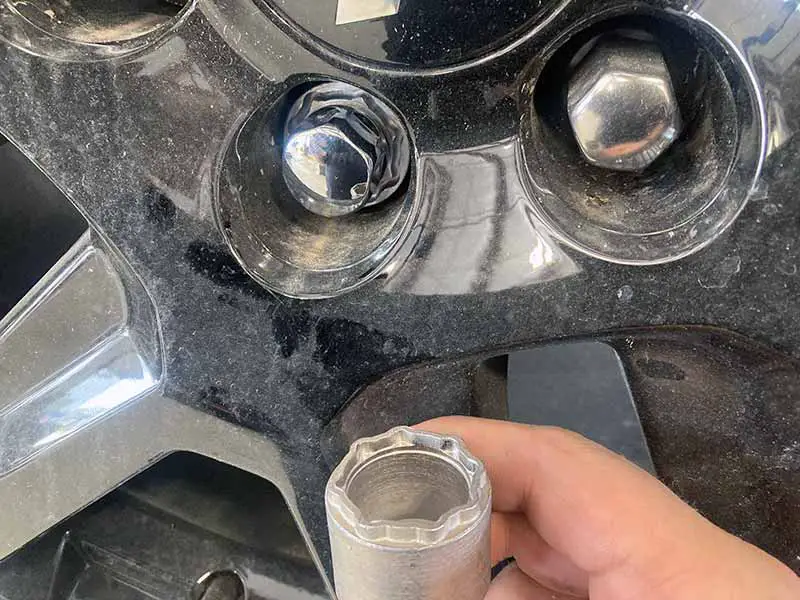
Locating the Wheel Lock Key
Now that we understand the importance of wheel locks, let’s tackle a common question: “Where is the wheel lock key?” Knowing where to find this key is crucial for both using and maintaining your wheel locks.
The Usual Suspects: Key Locations
- Glove Compartment: Often the first place to check. Many people store the wheel lock key here for easy access.
- Trunk or Boot: Look in the side compartments, under the floor panel, or near the spare tire.
- Under the Seat: Sometimes hidden beneath the driver or passenger seats for extra security.
- Tool Kit: If your car came with a tool kit, the wheel lock key might be nestled in there.
Storing the Wheel Lock Key
Keeping the wheel lock key safe and accessible is vital. Here are some tips:
- Easy-to-Remember Spot: Choose a location that’s both secure and easy to remember.
- Avoid Loose Storage: Don’t just toss it in the glove compartment; secure it in a small bag or attached to a larger tool.
- Informing Others: If others drive your car, make sure they know where the key is located.
Lost or Missing Key? Don’t Panic
- Contact Your Dealer: They can often provide a replacement if you have the lock code or a sample lock.
- Specialized Services: Some garages or locksmiths offer services to remove wheel locks without the key.
- Prevention: Keep a record of the lock code or take a photo of the key pattern for future reference.
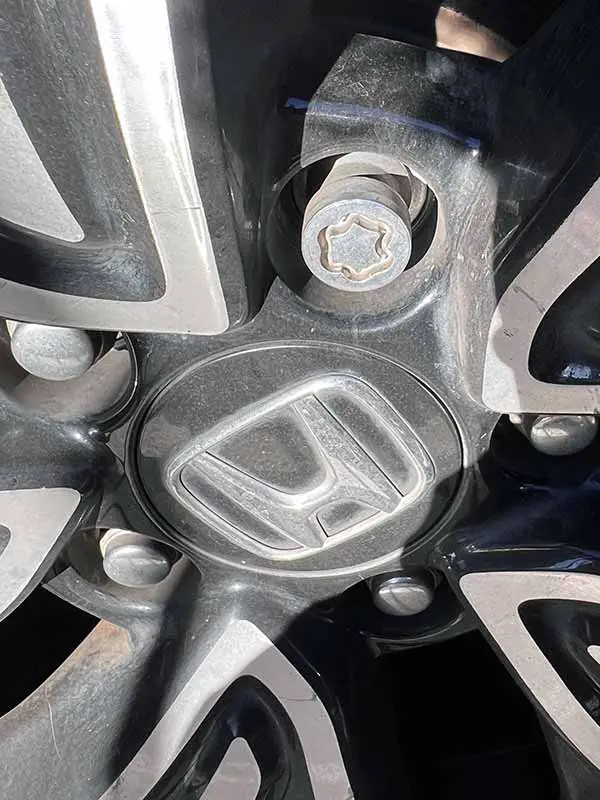
Installation and Removal of Wheel Locks
Having located your wheel lock key, it’s time to understand how to properly use it. Whether you’re installing new wheel locks or just rotating your tires, knowing the correct procedure is essential for maintaining the integrity of your wheel locks and ensuring the safety of your vehicle.
Installing Wheel Locks: A Step-by-Step Guide
- Align the Wheel Lock: Position the wheel lock nut in place on the wheel stud, just as you would a regular lug nut.
- Use the Key: Attach the key to your wrench and align it with the wheel lock. Make sure it’s seated properly.
- Tighten Gradually: Tighten the wheel lock by turning the wrench clockwise. Avoid over-tightening; snug is enough.
- Follow a Star Pattern: If installing multiple wheel locks, use a star pattern for even pressure distribution, just like with regular lug nuts.
Removing Wheel Locks Safely
- Position the Key: Place the wheel lock key onto the lock, ensuring it’s fully seated.
- Loosen Gently: Turn the key counterclockwise with your wrench to loosen the lock. If it’s stuck, avoid forcing it – this can damage the key or lock.
- Remove by Hand: Once loosened, unscrew the wheel lock by hand to prevent it from falling and getting damaged.

Wheel Lock Removal Kit
Choosing the Right Wheel Locks
Selecting the right wheel locks is more than just picking up the first set you see at the auto parts store. It’s about finding the perfect fit for your vehicle and your needs. Here’s how to make an informed choice.
Factors to Consider
- Wheel Type: Understand your wheel type – alloy, steel, custom designs – as this dictates the kind of wheel lock you need.
- Seat Type: Whether conical, ball, or flat, the seat type of your wheel should match that of the wheel lock.
- Thread Size: Check the thread size of your vehicle’s lug nuts to ensure the wheel locks you buy will fit.
Consult a Professional
- Expert Advice: If you’re unsure, seek advice from a professional. They can help you choose the right type and size of wheel lock.
- Installation Services: Some professionals offer installation services, ensuring that your wheel locks are fitted correctly.
Quality Matters
- Brands and Reviews: Opt for reputable brands and check reviews. Quality wheel locks are a worthwhile investment.
- Avoid Cheap Alternatives: Cheaper locks might seem appealing but often compromise on quality and security.
Making the Purchase
- Purchase as a Set: Wheel locks are typically sold in sets – one for each wheel. Ensure you’re buying a complete set.
- Keep the Key Code: When you purchase wheel locks, keep the key code in a safe place. It’s crucial if you need a replacement key.
Resources
Below are some links you may find helpful when learning about tires:
- Wheel locks: What are they and do they work? – CaptialOne.com
- How do wheel locks work? Tips for installing and removing wheel locks CarParts.com
Final Thoughts
Wheel locks provide a simple yet effective layer of protection against wheel theft, which is especially important for those with high-value or custom wheels.
The right type of wheel lock depends on your vehicle and wheel type, so choose wisely. Regular maintenance and proper installation are key to ensuring your wheel locks serve their purpose effectively.
Don’t forget the importance of knowing where your wheel lock key is and how to use it.
Good luck and happy motoring.
